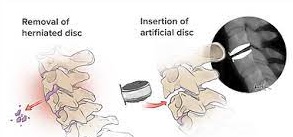Total Cervical Disc Replacement-Spine
India
-
Our Price USD 4230
-
Hospital Price USD 4700
-
You Save : USD 470
Booking Amount: USD 423. Pay Remaining 90% at the hospital.
Book NowAdditional Credit
Among the important extras we offer as part of the Additional Credit are the following:
-
Site Tourism For The Patient & Attendant
-
Airport Pick & Drop Service
-
Ambulance service at airport
-
Priority appointments with The Doctor
-
Cancel Easily Anytime with Full Refund
-
Room Upgradation
-
Free Online Doctor Consultation Valued at USD 20
-
Free hotel Stay for 5 to 7 days Accordingly
-
Welcome Kit at Arrival
-
Interpreter
-
Medical Visa Assistance
What is Included?
- Doctor consultation charges
- Lab tests and diagnostic charges
- Room charges inside hospital during the procedure
- Surgeon Fee
- Cost of implant
- Nursing charges
- Hospital surgery suite charges
- Anesthesia charges
- Routine medicines and routine consumables (bandages, dressings etc.)
- Food and Beverages inside hospital stay for patient and one attendant.
What is not Included?
- Extra Radiology Investigations
- Healthcare Professionals Charges of other consultations.
- Other Requested Services such as Laundry etc.
- Additional Pharmaceutical Products and Medicines After Discharge from Hospital.
- Management of Conditions Unrelated to Procedures or Pre-Existing.
- The cost of any additional implants will be in addition to the package cost.
Package Description
Total Cervical Disc Replacement-Spine:
On the side or front of your neck, a one- to two-inch incision (surgical cut) is performed. The surgeon gently moves the key components of the neck to the side until the bones of the vertebrae and the cervical disc can be seen. It is necessary to remove the cervical disc that is being replaced.
A one-to-two-inch incision is created in the front of the neck during cervical disc replacement surgery. The pre-vertebral fascia, a thin layer of tissue that covers the spine, is removed to expose the spinal discs, and the thin platysma muscle that sits just beneath the skin is cut and pulled aside.
Disease Overview:
Cervical degenerative disc disease
Neck discomfort and radiating arm pain are frequent symptoms of cervical degenerative disc degeneration. It occurs when one or more of the cervical spine's cushioning discs begins to degrade owing to wear and strain.
Some persons may be predisposed to faster wear due to a hereditary component. Injury can hasten the progression of degenerative changes and even induce them.
Six gel-like cervical discs (one between each of the cervical spine's vertebrae) absorb stress and keep vertebral bones from grinding against each other as the neck moves normally.
The annulus fibrosus is a robust yet flexible outer layer of braided cartilage strands that surrounds each disc. The nucleus pulposus is a soft interior filled with a mucoprotein gel that is sealed inside the annulus fibrosus. The nucleus is responsible for the disc's shock absorption.
The discs in youngsters are around 85 percent water. During the ageing process, the discs begin to lose moisture. According to some estimations, the water content of the disc drops to 70% by the age of 70,1 although the disc can lose hydration considerably more quickly in some persons.
When a disc loses its moisture, it provides less cushioning and is more susceptible to fractures and breaks. Because it lacks a direct blood supply, the disc is unable to properly mend itself (instead getting nutrients and metabolites via diffusion with adjacent vertebrae through the cartilaginous endplates). As a result, a disc tear will either not heal or may result in weaker scar tissue that may rupture again.
Disease Signs and Symptoms:
The cervical spine (neck) and the lumbar spine (lower back) are the most typically affected by degenerative disc disease, since these are the parts of the spine that experience the greatest motion and are hence the most prone to wear and strain.
The most common sign of degenerative disc disease is a low-grade, persistent discomfort that periodically flares up into more acute, possibly debilitating agony surrounding the degenerating disc.
Pain flare-ups might be caused by recent exercise or excessive tension on the spine, or they can happen out of nowhere. Episodes might last anywhere from a few days to many weeks before reverting to mild pain levels or disappearing totally.
Increased discomfort with tasks that require bending or twisting the spine are other frequent signs of degenerative disc degeneration.
A "giving out" sensation induced by spinal instability in which the neck or back feels like it can't offer basic support and may lock up, making movement impossible.
Muscle spasms or tension are frequent side effects of spinal instability. A degenerative disc may not produce discomfort in certain situations, but muscular spasms can be extremely unpleasant and incapacitating.
Radiating pain that feels sharp, stabbing, or burning is a possibility. This pain is felt in the shoulder, arm, or hand in cases of cervical disc degeneration (called cervical radiculopathy); in situations of lumbar disc degeneration, pain is felt in the hips, buttocks, or down the back of the leg (called lumbar radiculopathy) (called a lumbar radiculopathy).
Disease Causes:
Increased discomfort while in particular situations, such as sitting or standing for lengthy periods of time (exacerbating low back pain) or staring at a mobile phone or book for too long (worsening neck pain).
Pain is reduced when you change positions regularly rather than either sat or standing for lengthy periods of time. Similarly, extending the neck on a regular basis can help with cervical disc pain, and taking short, frequent walks throughout the day can help with lumbar disc pain.
Reduced discomfort when sitting in a reclining position or lying down with a pillow under the knees, or when sleeping with a pillow that preserves the neck's natural curve.
Increased discomfort while in particular situations, such as sitting or standing for lengthy periods of time (exacerbating low back pain) or staring at a mobile phone or book for too long (worsening neck pain).
Pain is reduced when you change positions regularly rather than either sat or standing for lengthy periods of time. Similarly, extending the neck on a regular basis can help with cervical disc pain, and taking short, frequent walks throughout the day can help with lumbar disc pain.
Reduced discomfort when sitting in a reclining position or lying down with a pillow under the knees, or when sleeping with a pillow that preserves the neck's natural curve.
The degree of chronic pain, also known as baseline pain, varies greatly across people and can vary from absolutely no discomfort or a little annoyance to severe and crippling agony.
Chronic degenerative disc disease pain that is severe and fully incapacitating does occur in certain situations, but it is uncommon.
Disease Diagnosis:
Degenerative disc disease is commonly diagnosed using the following procedure:
A medical history is taken that includes information on current and previous neck or back pain symptoms, such as when the pain began, how often it happens, where the pain is felt, and the degree of the pain and its influence on mobility. A medical history may also contain details about sleep and eating patterns, exercise and activity levels, and how activity or posture affects symptoms.
A physical examination is performed, which may involve palpation (feeling along the spine for abnormalities), a reflex test, and/or a range of motion test (bending the spine forward, backward, or to the side).
In some circumstances, an imaging test may be done to detect or confirm spinal disc degeneration. For suspected disc degeneration, an MRI scan is typically utilised, which might reveal disc dehydration, rips or fissures in the disc, or a herniated disc. Because it appears darker on an MRI image, a dehydrated disc is also called a dark disc or black disc.
In some circumstances, an imaging test may be done to detect or confirm spinal disc degeneration. For suspected disc degeneration, an MRI scan is typically utilised, which might reveal disc dehydration, rips or fissures in the disc, or a herniated disc. Because it appears darker on an MRI image, a dehydrated disc is also called a dark disc or black disc.
It's crucial to remember that the severity of pain has nothing to do with the degree of disc degeneration. Even discs that are severely deteriorated may not cause much pain, whereas discs that have minimal degeneration might cause substantial discomfort—a few studies have revealed disc degeneration in persons who aren't feeling any disc pain.
As a result, a degenerative disc disease diagnosis should always be based on a combination of a medical history, a physical exam, and any imaging tests requested.
Disease Treatment:
The goal of treating painful degenerative disc disease is to reduce discomfort, stabilise the spine, and improve or retain mobility.
Pain management measures, physical therapy, and other modalities are commonly used to treat degenerative disc disease.
Initial pain relief for degenerative disc pain usually consists of a mix of the following options:
Pain relievers sold over-the-counter (OTC). Common pain relievers include aspirin (Bayer), ibuprofen (Advil), and naproxen (Aleve). Inflammation adds to discomfort, stiffness, and nerve root irritation. Acetaminophen (Tylenol) is a pain medication that works by interfering with the brain's pain impulses.
Pain relievers with prescription. Muscle relaxants or narcotic painkillers may be used to treat severe pain that is not eased by over-the-counter drugs. These drugs are frequently used to treat severe, acute pain that is expected to last only a few days or weeks. These drugs can be addictive and have dangerous negative effects, so they should be taken with caution and in accordance with the prescribing doctor's recommendations.
Heat and ice are two extremes. Heat therapy for the low back promotes circulation, reducing muscular spasms and stress while also increasing mobility. Ice packs are effective in reducing inflammation and numbing minor discomfort. Heat can be applied before physical exercises to relax the muscles, and ice can be applied afterward to reduce inflammation.
Manipulation by hand. Manual manipulation is a common pain treatment approach for low back pain that is often coupled with chiropractic care. Practitioners employ force and pressure on the back, hips, and other places with their hands, with the purpose of relieving muscle and joint tension. Manual manipulation has been proven to be a useful tool for momentarily reducing pain, and in certain situations, it is as effective as medicine.
Massage therapy is a type of treatment that involves massaging the Massage treatment can help relieve pain by relieving tension and spasms in the low back muscles. This relieves pressure on the spine and relieves pain. Massage treatment can also help to enhance circulation by delivering healing nutrients and oxygen to strained muscles.
Steroid injections in the epidural space (ESIs). A steroid injection in the area around the spine can help to lessen pain signals and inflammation. To give pain relief during exercise and rehabilitation, a steroid injection can be administered in conjunction with a physical therapy programme. An epidural steroid injection may relieve pain for a few weeks to a year if it is successful.
For successful pain management, a mix of therapies is often required. To locate the therapies that give the most effective pain relief, a process of trial and error is usually required.
Prolonged bed rest is not advised since it exacerbates back discomfort. When pain is at its worst, resting for a day or two may be beneficial, but being inactive for an extended period of time is not.
Information related to Treatment
Package Details
Days in Hospital
3 Days
Days in Hotel
*
14 Days
Room Type
Private
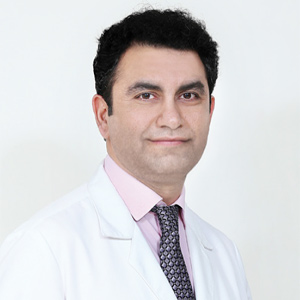
Treating Doctor
Dr. Bhushan Nariani
Orthopaedic Surgeon- Ankle surgery, Brachial plexus repair, Osteoarthritis, Avascular Necrosis of Hip Joint, Osteoarthritis (Most Common), Hip Fracture or Hip Dysplasia, Ankle Fracture, Deformed Knees, Meniscus Tear, Shoulder Arthritis, Torn Anterior, Osteonecrosis, Hip Osteoarthritis, Carpal Tunnel Syndrome Surgery, Hip/Ankle/Knee Injury, Rheumatic Arthritis, Injury or Fracture of the Hip Joint, Ankle Arthritis, Erb's Palsy, Bone Tumor in the Hip Joint, Brachial Plexus Avulsion, Shoulder Injury, Knee Osteoarthritis, Torn Rotator Cuff, Knee pain
BLK-Max Super Speciality Hospital New Delhi, India
18 Years of Experience

Treating Doctor
Dr. Rajender Prasad
Orthopedist & Spine Surgeon- Ankylosis Spondylitis, Brachial plexus repair, Spinal Tumor, Back pain, Spinal Deformity, Carpal Tunnel Syndrome, Cervical Canal Stenosis, Cervical Disc Prolapse, Congenital Spine Abnormality, Facet Joint & Sacro-Iliac, Lumbar Canal Stenosis, Lumbar Disc Herniation, Sciatica, Spinal Infection, Spinal Injury
Indraprastha Apollo Hospitals, New Delhi New Delhi, India
38 Years of Experience
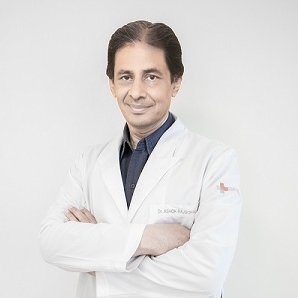
Treating Doctor
Dr. Ashok Rajgopal
Orthopaedic Surgeon- Joint Replacement Surgery, Knee Surgery, Anthroscopic Meniscus Surgery
Medanta-The Medicity, Gurgaon Gurgaon, India
42 Years of Experience
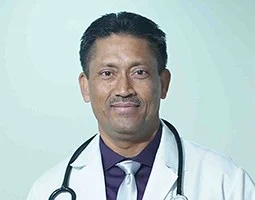
Treating Doctor
Dr. Yuvraj Kumar
Orthopaedic Surgeon- Spine Surgery, Trauma Surgery, Joint Replacement Surgery, Knee Replacement, Hip Replacement, Shoulder & Elbow Surgery, Joint Pain Treatment, Primary and Revision Knee & Hip Replacement, Hip Pain Treatment, Joint and Muscle Problems, Hip Arthroplasty, Joint Dislocation Treatment, Arthroscopy Procedure
Accord Super specialty Hospital Faridabad, India
24 Years of Experience
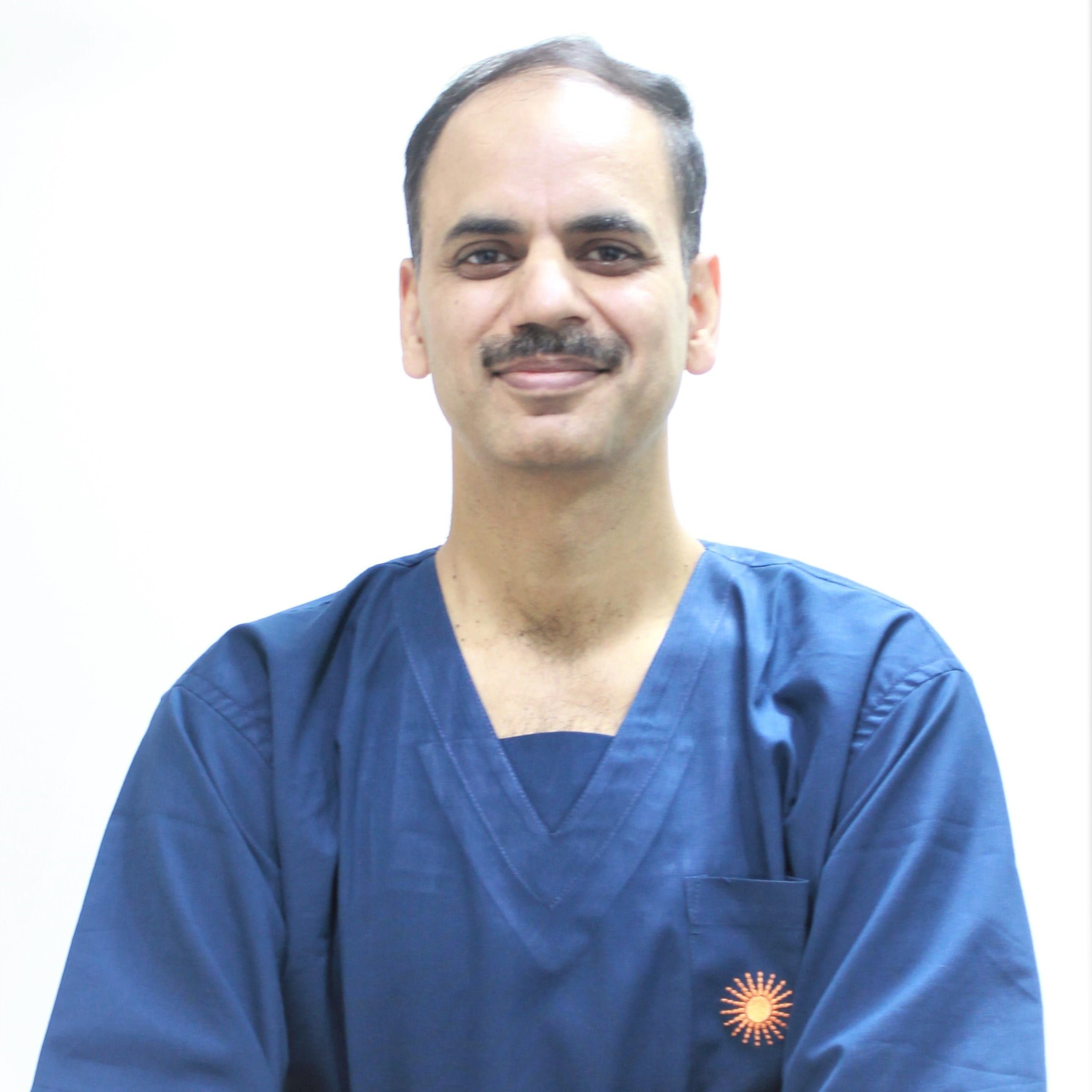
Treating Doctor
Dr. Sumit Batra
Orthopaedic Surgeon- Spine Surgery, Deformity correction, Spine fracture/ trauma, Disc Replacement ( Cervical /Lumber), Microdiscectomy, Knee Replacement, Total Knee Replacement, Total Hip Replacement, Complex Trauma Surgery Primary
Marengo Asia hospital, Faridabad Faridabad, India
24 Years of Experience
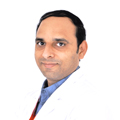
Treating Doctor
Dr. Vipin Tyagi
Orthopedist- Spinal Deformity correction, Correction of deformities, Spasticity, Joint Replacement Surgery, Wrist Problem, Reconstruction and Rehabilitation, Disc Slip, External Fixator, Reconstruction and Bone Lengthening, Cruciate Ligament Recosntruction
Medanta-The Medicity, Gurgaon Gurgaon, India
35 Years of Experience
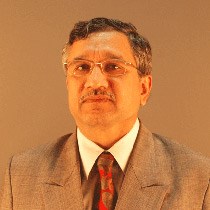
Treating Doctor
Dr. BHAVE ARVIND
Orthopedist & Spine Surgeon- Slip Disc Specialist, Endoscopic Surgery, Minimally invasive spine surgery (MIS), Spine fracture/ trauma, Spinal pain & Spinal Stenosis, Degenerative Spine
Deenanath Mangeshker Hospital and research centre, Pune Pune, India
31 Years of Experience
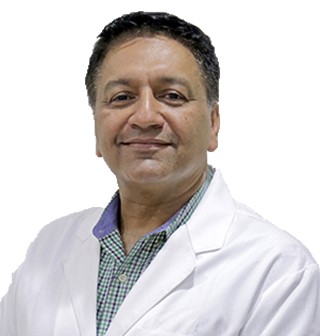
Treating Doctor
Dr. Nitiraj Oberoi
Orthopaedic Surgeon,Orthopaedic Surgeon- Ankle surgery, Joint Replacement Surgery, Complex Trauma Surgery Primary, Revision & Complex Joint Replacement, ACL/PCL Reconstruction, Arthroscopy of Knee, Shoulder Surgery, Sports Injuries Surgery
Fortis Escorts Heart Institute New Delhi, India
29 Years of Experience
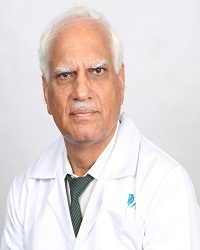
Treating Doctor
Dr. Vinod Sukhija
Orthopaedic Surgeon,Orthopaedic Surgeon- Knee Replacement, Hip Replacement, Arthroscopic Surgery, Knee Ligament Surgery (ACL), Knee Arthroscopy, Carpal Tunnel Syndrome Surgery, Arthrisis management, Shoulder Arthroscopy, Hip Arthroscopy, Rotator Cuff Surgery, Tennis or Golfer's Elbow treatment, Paget's Disease Treatment, Torn Meniscus treatment
Indraprastha Apollo Hospitals, New Delhi New Delhi, India
39 Years of Experience
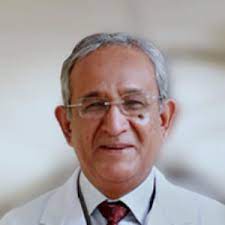
Treating Doctor
Dr. (Brig.) BK Singh
Orthopedist- Total Hip Replacement, Uni Condylar Knee Replacement, Resurfacing Hip Arthroplasty, Thrust plate prosthesis, Resurfacing shoulder Arthroplasty (Copeland), Total Ankle Replacement, Hip resurfacing with computer navigation, Minimally Invasive Knee Replacement Surgery, Acetabular fixation, Bilateral Hip Replacement, Both Knee simultaneous replacement, High Flex knee replacement, Robotic-arm assisted Total Hip Replacement (THR), Robotic-arm assisted Total Knee Replacement (TKR)
Artemis Hospitals Gurgaon, India
34 Years of Experience

